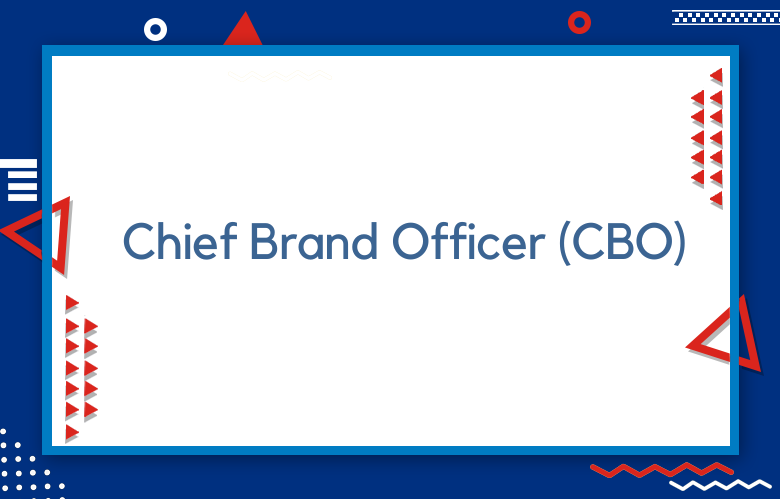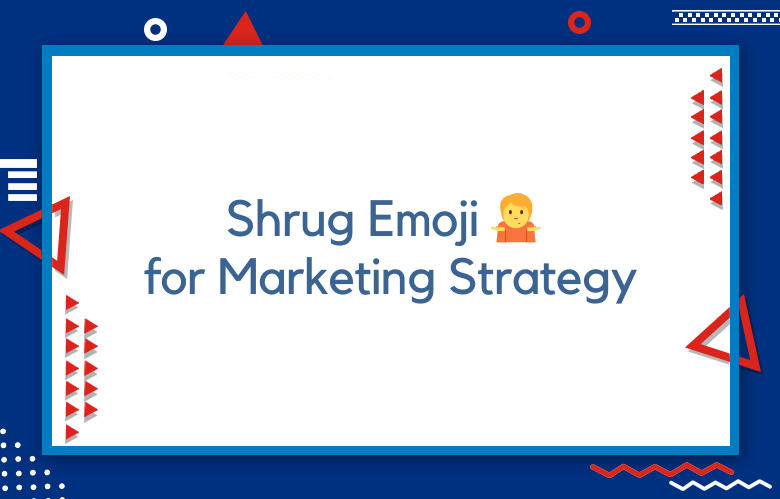Chief Brand Officer (CBO) Role and Responsibilities

The Chief Brand Officer (CBO) is a strategic leader responsible for driving brand development and ensuring a company’s long-term success. The CBO plays a critical role in shaping the brand’s identity, positioning, and strategy and oversees all aspects of branding, including marketing, advertising, public relations, and product development.
Chief Brand Officer (CBO) Role and Responsibilities
The Chief Brand Officer (CBO) is a strategic leader responsible for developing and executing the brand strategy that defines the organization’s identity, values, and unique selling proposition. The CBO is critical in shaping the brand’s market perception and driving business growth.
The CBO must possess a deep understanding of branding and marketing principles, a strong creative vision, and a strategic mindset. They must be able to develop and execute branding strategies that align with the company’s overall goals and vision and ensure that all branding efforts are consistent and cohesive across all channels.
The CBO’s responsibilities typically include:
Developing and implementing branding strategies
The CBO is responsible for developing and executing branding strategies that align with the company’s overall goals and vision. This includes defining the brand’s positioning, messaging, and target audience.
Overseeing branding initiatives
The CBO oversees all branding initiatives, including marketing, advertising, public relations, and product development, to ensure that all efforts are consistent with the brand’s identity and positioning.
Monitoring and analyzing brand metrics
The CBO monitors and analyzes critical brand metrics, such as brand awareness, brand equity, and brand loyalty, to ensure the brand performs well and meets its goals.
Driving brand innovation
The CBO drives brand innovation by exploring new technologies, platforms, and channels that can help the brand stay ahead of the competition and remain relevant in a rapidly changing market.
Communicating branding strategies to stakeholders
The CBO communicates branding strategies and initiatives to key stakeholders, including the board of directors, investors, and employees, to ensure alignment and support for branding efforts.
The CBO plays a critical role in a company’s branding efforts, and organizations that invest in this position are more likely to build strong, recognizable, and successful brands. The CBO must be a strategic thinker, a creative visionary, a leader, an analyst, and an effective communicator.
Unleashing the Power of Brand Strategy: The Chief Brand Officer’s Ultimate Guide
As a Chief Brand Officer (CBO), you are the guardian of your organization’s brand. Your role is to develop and execute a compelling brand strategy that sets your organization apart from the competition, resonates with your target audience, and drives business growth.
In this ultimate guide, we will explore the key elements of brand strategy and provide actionable insights to help you unleash your brand’s power and drive business success.
Understanding Your Brand
Understanding your brand is the first step in developing a successful brand strategy. This includes understanding your brand’s identity, values, and unique selling proposition (USP).
Define your brand identity.
Your brand identity is the unique personality, voice, and visual elements that make your brand distinct from others in the market.
Articulate your brand values.
Your brand values are the guiding principles that define what your brand stands for and how it behaves.
Identify your USP: Your USP is the unique value your brand offers customers, which sets it apart from the competition.
Understanding Your Target Audience
Understanding your target audience is critical to developing a successful brand strategy. You must know your customers’ values and how your brand can meet their needs.
Define your target audience.
Identify your ideal customer’s demographic and psychographic characteristics.
Understand your target audience’s needs and pain points
Conduct market research to understand your target audience’s needs and challenges.
Identify your target audience’s preferences and behaviors: Understand their purchasing decisions and what influences their choices.
Developing Your Brand Strategy
Once you deeply understand your brand and target audience, you can develop a brand strategy that resonates with them and drives business growth.
Articulate your brand positioning.
Your brand positioning is how you want your brand to be perceived by your target audience.
Develop your brand messaging.
Your brand messaging is how you communicate your brand’s unique value to your target audience.
Create your brand identity.
Your brand identity includes your brand name, logo, color palette, typography, and other visual elements that convey your brand’s personality and values.
Define your go-to-market strategy.
Your go-to-market strategy outlines how you will reach your target audience and deliver your brand messaging.
Develop your brand guidelines: Your guidelines provide guidelines for consistently representing your brand across all touchpoints.
Implementing Your Brand Strategy
Implementing your brand strategy involves bringing your brand to life across all touchpoints and channels.
Design and develop your brand assets: Create a consistent visual identity across all brand assets, including your website, social media profiles, marketing materials, and packaging.
Demystifying the CBO: What Qualifies You for This Crucial Role?
The Chief Brand Officer (CBO) role is critical in any organization. They are responsible for developing and executing the brand strategy that defines the organization’s identity, values, and unique selling proposition. A CBO must possess exceptional skills, knowledge, and experience to excel in this role.
But what exactly qualifies someone for this crucial role? Here are some of the essential qualifications and skills that are typically required:
Strong branding expertise
A deep understanding of branding principles, including brand strategy, positioning, identity, and management, is essential. A CBO must articulate the brand’s unique value, develop a compelling brand positioning, and create a consistent brand identity across all touchpoints.
Strategic thinking
Developing and executing strategic branding initiatives that align with the organization’s overall goals and vision is crucial. A CBO must be able to think strategically, anticipate trends, and make data-driven decisions to drive brand growth.
Leadership skills
A CBO must be able to lead and inspire teams to execute the brand strategy effectively across all departments. They must also build strong relationships with cross-functional teams, including marketing, sales, product, and customer success, and collaborate effectively to achieve common goals.
Analytical skills
It is essential for a CBO to be able to measure and analyze the effectiveness of the brand strategy and make data-driven decisions. A CBO must be comfortable with data and able to use it to inform branding initiatives and measure their impact.
Communication skills
Excellent written and verbal communication skills are critical for a CBO. They must effectively communicate the brand strategy and initiatives to key internal and external stakeholders and build consensus around the brand vision.
Experience
Typically, a CBO will have 10-15 years of experience in branding, marketing, or related fields, with at least 5-7 years in leadership. They should have a proven track record of developing and executing successful brand strategies that drive business growth.
Crafting the Brand Architecture: A CBO’s Key Responsibility
One of the chief brand officer’s (CBO) most important responsibilities is crafting the organization’s brand architecture. Brand architecture refers to the structure and organization of a company’s brands, products, and services and how they relate. It is a critical component of the brand strategy, as it helps to create a clear and consistent brand hierarchy that reinforces the overall brand positioning.
The CBO’s role in crafting the brand architecture involves:
Defining the brand portfolio
The CBO must define the organization’s brand portfolio, including the primary brand, sub-brands, and product or service brands. This involves determining which brands should be part of the portfolio and how they fit together.
Establishing the brand hierarchy
The CBO must establish a clear hierarchy among the portfolio brands, defining which are primary, secondary, or tertiary and how they relate to each other. This helps create a clear and consistent brand message across all touchpoints.
Defining the brand relationships
The CBO must define the relationships among the brands in the portfolio, including the parent-child relationships, endorsed brand relationships, and co-branded relationships. This helps to create a cohesive and consistent brand experience for the consumer.
Developing brand guidelines
The CBO must develop guidelines outlining how each brand should be represented across all touchpoints, including visual identity, messaging, and voice. These guidelines help to ensure consistency and cohesiveness across the brand portfolio.
Monitoring brand performance
The CBO must monitor the performance of each brand in the portfolio, including brand awareness, brand equity, and brand loyalty. This helps identify areas for improvement and ensures that the brand architecture supports the overall brand strategy.
Conclusion
The Chief Brand Officer (CBO) is a strategic leader who is critical in shaping and managing an organization’s brand. The CBO is responsible for developing and executing the brand strategy, ensuring brand consistency across all touchpoints, and measuring and reporting on its effectiveness.
The CBO must have a deep understanding of the organization’s target audience, competitors, and industry trends and must be able to develop and implement a brand strategy that aligns with the organization’s overall goals and vision.
In addition, the CBO must be able to lead and collaborate with cross-functional teams, including marketing, sales, product, and customer success, to ensure that the brand strategy is executed effectively across all touchpoints.



